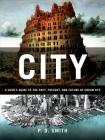History on Display: 1001 Inventions
Last year, a couple of months before I launched History in the Margins, My Own True Love and I met up with one of my best history buddies to visit an exhibit at the New York Hall of Science: 1001 Inventions: The Enduring Legacy of Muslim Civilization.
Although the exhibit was obviously designed with children in mind, we found it utterly engaging, from the introductory film starring Ben Kingsley as 12th century engineering genius, al-Jazari, to the working scale models of medieval Islamic technology. The exhibit's creators did an excellent job of bringing the medieval Islamic world, in all its diversity, to life for a western audience. This is a topic I've spent a lot of time on, and I still learned plenty of new things.
I hear some of you grumbling, "That was more than a year ago, why is she telling us about this now?"
Because, dear readers, 1001 Inventions is due to open for a six month run in Washington DC on August 12 at the National Geographic Museum. If you live anywhere nearby, or have a DC trip on the schedule, it's well worth the visit.
Déjà Vu All Over Again: The Immigration Law of 1924
America has always been a nation of immigrants, fueled by a constant stream of those with the energy and imagination to leave the familiar in search of something more. And it has always had people who wanted to keep out the immigrants who came a generation or two after they themselves arrived.
Between 1880 and 1923, America saw the greatest voluntary migration in human history. Twenty-one million people moved to the United States in search of a better life. By 1911, the United States Immigration Commission reported that three-fifths of American wage-earners were born somewhere else..
Not everyone was happy about the new arrivals. Many groups argued that Congress should shut down the flood of immigration, just as some people now argue for tighter control of immigration. Labor unions feared that the flood of immigrants would take American jobs and depress wages. (Sound familiar?) Many longtime Americans felt that newcomers from eastern and southern Europe were inherently inferior to earlier immigrants from northwestern Europe. Others disliked the fact that many of the new arrivals were Catholic or Jewish. (Members of the Ku Klux Klan were the most violent proponents of this position, but they weren't alone.)
Responding to these pressures, Congress passed a new immigration law in 1924. In addition to limiting the total number of immigrants allowed into the country each year, the new law established immigration quotas for each country based on the proportion of each nationality in the United States in the 1890 census, effectively reducing immigration from central and southern Europe. Asian immigrants were excluded altogether, with these exception of those from Japan and the Philippines.* The quotas remained in place, largely unchanged, until 1965.
You'd think we'd learn.
*Japan kept tight control over the number of emigrants allowed to leave. The Philippines were a US possession.
City
Cultural historian P.D. Smith, author of Doomsday Men, argues that the city is humanity's greatest creation. After reading City: A Guidebook for the Urban Age, it's easy to believe it's true.
City is not a simple chronological history of urban areas from their first appearance in ancient Mesopotamia to modern megacities. Instead, Smith organizes his work around elements of city life that "have become part of our urban genetic code": cemeteries, street protests, slums, suburbs, markets, street food, graffiti. He draws illuminating parallels and unexpected connections. The chapter titled "Where to Stay", for example, begins with the growth, death and rebirth of downtown, looks at immigrant neighborhoods in nineteenth century America in the context of Jewish ghettos in Europe, makes a sharp turn to slum cities in the developing world, considers the allure of garden suburbs beginning in ancient Babylon, and ends with a brief history of the hotel.
The book is punctuated by sidebars that go off at right angles to the main text. A brief history of the parking meter accompanies the section on commuting. The hanging gardens of Babylon are discussed in the context of urban parks.
Smith's range of material is breathtaking, but he wears his erudition lightly. The prose of City is smart and fast-paced, with a nice balance between big picture history and close-up details. The book is full of "aha" moments and occasional humor. This one's a must read for history geeks.*
*I've sworn off using the phrase "must read" in reviews, tweets, blog posts... But in this case I'm sticking to my guns. Smith ranges so broadly in time and space that I can't imagine a history fan who won't find at least one section fascinating.
This review previously appeared in Shelf Awareness for Readers





